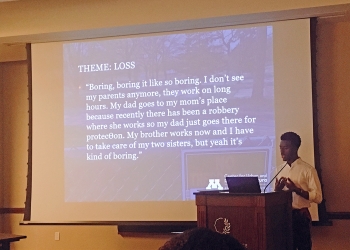In the past 20 years, after decades of disinvestment and decline, central cities have seen a reversal of fortune and are experiencing rapid growth, particularly in the urban core. Many large cities are now struggling with housing shortages and affordability problems. There is vigorous debate amongst policy makers, scholars, and activists about the role that new market-rate apartments play in alleviating housing affordability issues. Prior research suggests that new market-rate construction may result in more affordable housing in the long-run, but much less is known about how this type of new development affects neighborhoods in the short-run. This study evaluates how new construction affects rent for nearby apartments in the five years after a new market-rate building is completed. We use a novel panel of building-level rents in Minneapolis, MN from 2000-2018 and a difference-in-differences study design to compare rent trajectories of units within 300 meters of new construction to a comparison group 300 to 800 meters away. We evaluate the impact of new construction using both models that treat nearby units as a single rental market, and "submarket" models that allow for heterogeneous treatment effects based on the units’ place in the pre-period rent distribution. While we find no effect in the single market model, our submarket approach suggests that lower-priced rental housing close to new construction had 6.7 percent higher rents compared to the comparison group. New construction had the opposite effect on higher-priced housing; rents were 1.7 percent lower close to new construction than in comparison group buildings, but we cannot rule out a null effect. The size of the effect was larger closer to new construction and the effects persisted for at least two years after the new construction is completed. This study reiterates the importance of understanding housing as a collection of submarkets rather than a singular market. Our findings are important for planners and policymakers who seek to balance growth and protect existing lower-income communities.
Read the "Build Baby Build?" working paper
This project made possible with additional funding and support from the Minnesota Housing Partnership. Thank you to Alexander Everhart, Edward Goetz, Gabriella Norton, and Laura Barrie Smith for providing feedback on previous drafts. Corresponding author: Anthony Damiano.









